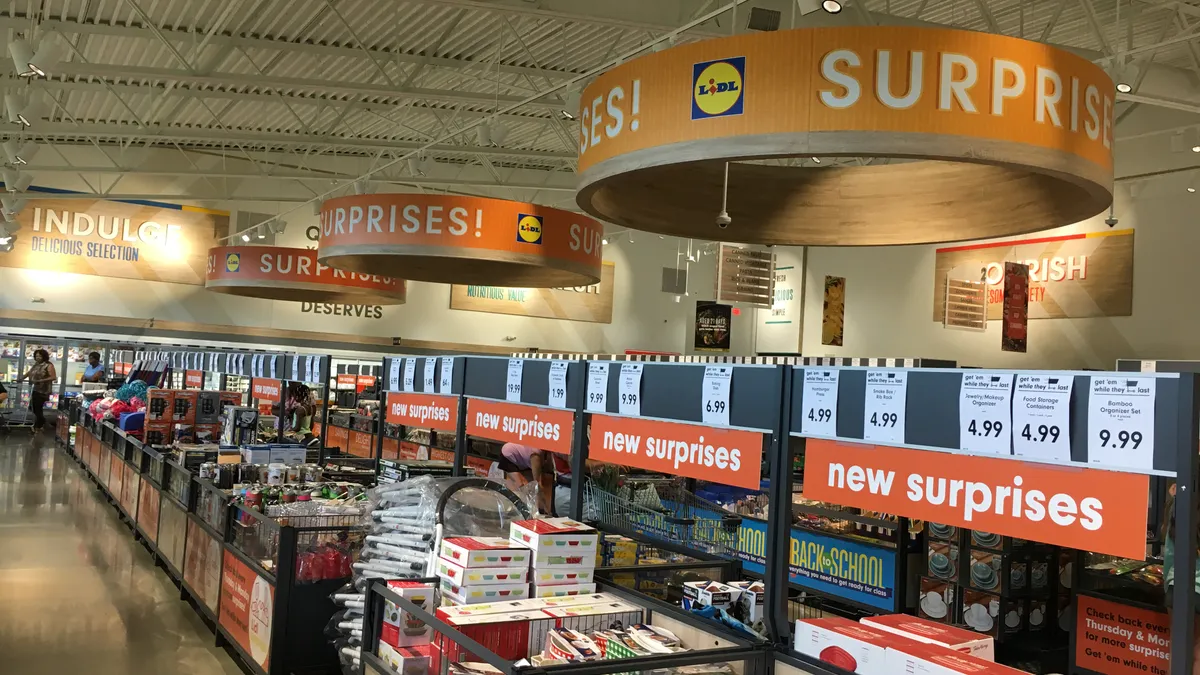Dive Brief:
- Grocers have expanded their assortment of nonfood products in an effort to earn higher margins while also stealing business away from other retailers, according to USA Today.
- Lidl will feature apparel from supermodel Heidi Klum’s fashion line this fall, while other grocers offer everything from boogie boards to rugs and linens. Sprouts Farmers Markets stores sell yoga mats and beeswax candles.
- While grocery products are often marked up 12% to 23%, according to USA Today, nonfood items more than double those margins. Electronics can earn 35% to 50% margins, sporting goods 40% to 65% and apparel 60% to 100%.
Dive Insight:
Nonfood items have long been a part of supermarkets’ product assortment. But these products have often been an afterthought for retailers that are more concerned with selling boxes of cereal, cans of soup and fresh produce. Many grocers have a limited selection of toys, school supplies and kitchen utensils. Some of the more ambitious companies will offer seasonal displays around summer grilling season, winter holidays and more.
As competition and pricing pressure have heated up, supermarkets desperate to earn back margins have paid more attention to their nonfood selections. It’s not clear the extent to which grocers are increasing their assortments, renovating them, or both. In any case, companies like Kroger and Sprouts are getting more strategic about their nonfood merchandising. In addition to easy one-offs like cookware, cleaning supplies and kitchen utensils, grocers are also offering in-demand items like yoga mats, fidget spinners and team apparel.
For hard discounters Aldi and Lidl, nonfood items are a core part of their store strategy. Both retailers offer assortments that rotate weekly and include everything from pressure washers to purses to lawnmowers. These “surprises,” as Lidl and Aldi call them, add a "treasure hunt" feel to stores, and serve as a major draw for customers.
By heavily promoting their general merchandise, the discounters have flipped the traditional model of leading with grocery. The success of this strategy has yet to be determined, and grocers are certainly wary of losing their focus on food. But promising returns could lead supermarkets to become increasingly promotional with their nonfood selection.
In-store merchandising, of course, is a key lever for general merchandise sales. And cross merchandising — potato peelers next to potatoes, grilling utensils next to the meat case — remains a reliable strategy. But grocers will want to implement price discounts, circular ad callouts, rotating displays and more. Timing is key: Following the Pittsburgh Penguins' Stanley Cup win last year, Giant Eagle stores made sure to merchandise a selection team hats, shirts and other apparel, nonfoods director Paul Abbott told USA Today.










